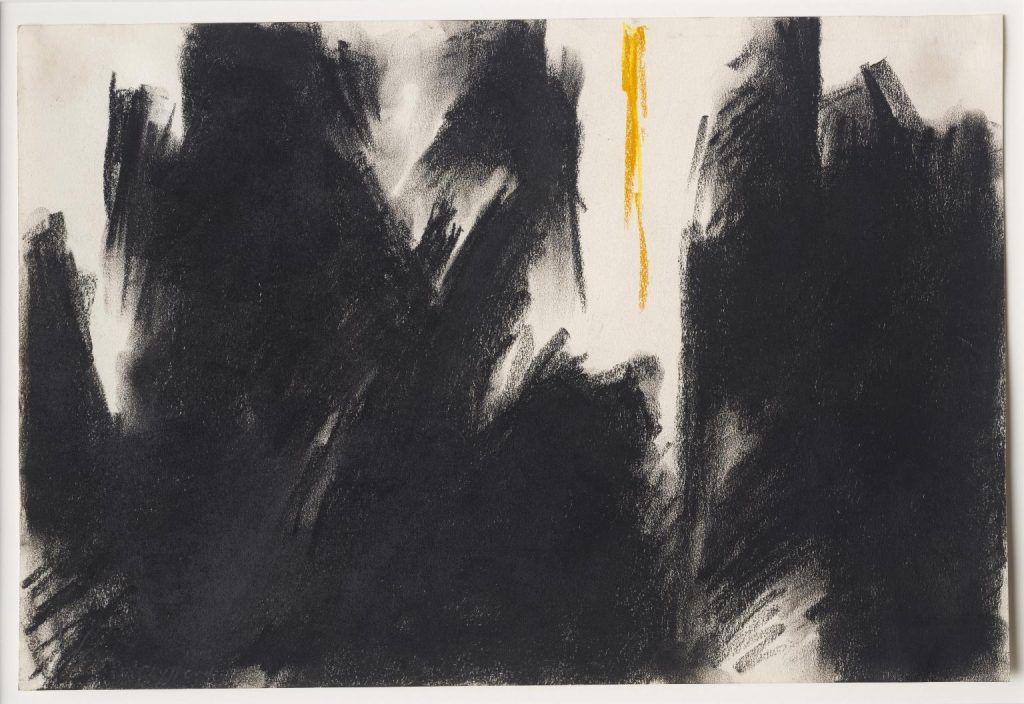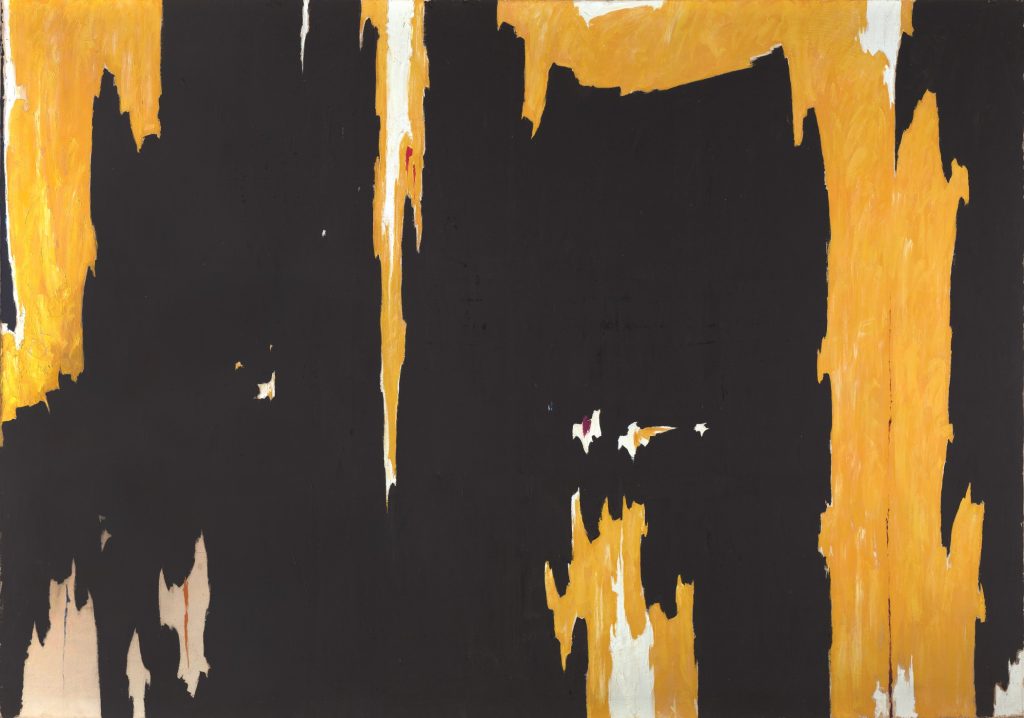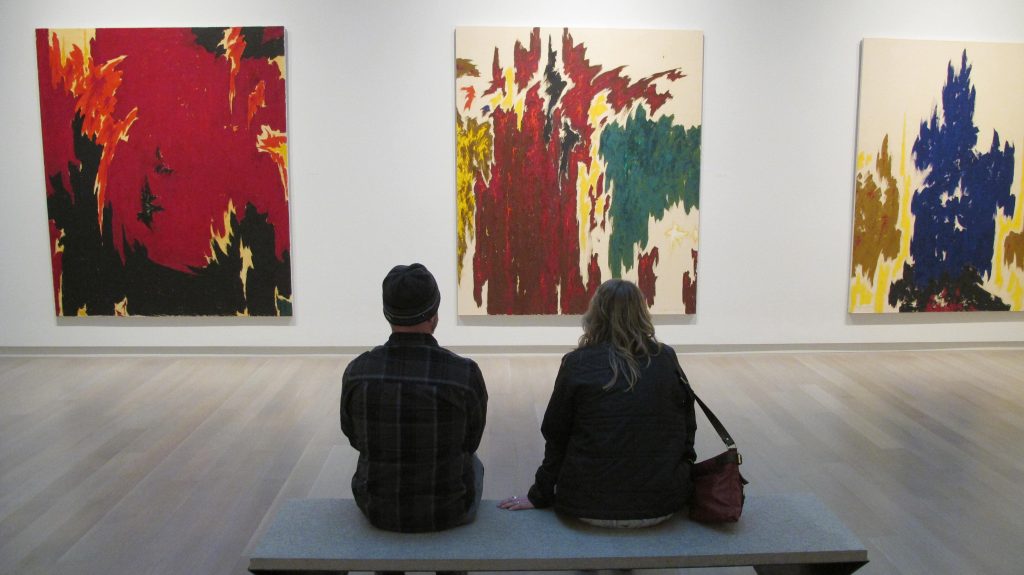American painter Clyfford Still (1904–1980) is most recognised for his contributions to the abstract expressionist movement. North Dakota’s Grandin is where he was born. Regionalism and social realism impacted Still’s early works before he eventually turned to abstraction.
Clyfford Still is renowned for his distinct abstract expression style. It is made up of simple shapes with natural tones that are paired with the right colours. By staying away from the modern art craze in the late 1940s, Still rose to legendary status and opened up new avenues for abstract expressionist painters. His brilliant reputation broke in 1961 when he retired into seclusion, although still highly critical of the art world.
Abstract expressionism, a post-World War II art trend emphasising impromptu, intuitive production, was greatly influenced by Clyfford Still. Still, compared to some of his contemporaries, he favoured a more solitary approach to his painting. Throughout his life, he presented few solo exhibits and retained control of a sizable amount of his artwork. Large areas of a single colour or closely similar colours are the hallmark of the colour field painting movement, sometimes linked to Clyfford Still. He frequently used contrasted, jagged forms in his paintings.

Still was well-known for his expansive paintings, which let spectators fully immerse themselves in the powerful emotional content of his creations. Much of Still’s output was kept private after his 1980 death. On the other hand, Denver’s Clyfford Still Museum opened to the public in 2011. The museum holds archives and a sizable collection of Still’s works.
Still has had a long-lasting influence on the art world with his contributions to abstract expressionism and his distinctive painting style. His vivid, gestural forms, strong use of colour, and depth of emotion are all acknowledged in his work. In the larger context of modern art, Clyfford Still’s impact on the abstract expressionist movement is noteworthy, and his works frequently elicit intense emotional responses.
Paintings of the good and the bad life
Clyfford’s bold colour and coarse contours set his still painting apart from many others. In addition, he depicted odd characteristics in both people and objects, such as the men’s enormous, hideous limbs in one image and the cars caught in the hay in another. Many argue that his isolation resulted from his perceived conflict with the art society. He maintained that art should not be viewed on display but appreciated in a natural setting, such as at home. However, he wrote a will that specified that his paintings might be seen and sold as long as specific clauses were followed. His second wife honoured her husband’s wishes and turned down hundreds of business opportunities even after he passed away.
His father had not made his life simple by mistreating Still to make sense of things. He was raised in challenging circumstances, had a menial job, and yearned to break with his family’s farming legacy. He transformed a disastrous way of life into an artistic portrayal of himself. Nevertheless, he succeeded wildly in his career and became one of abstract expressionism’s most influential artists. He and fellow Abstract Expressionists had “a sense of apocalyptic extremes” in their engagement with art and other artists. To achieve this, he demonstrated how he set himself up against radicalism, even his own.

He remained confronted with obstacles in the art institution. His fierce personality and opposition to materialism resulted in few exhibitions during his life. This strategy allowed him to achieve a different level of notoriety and financial success than some of his contemporaries while still upholding his artistic integrity. He continued to face personal challenges, including a turbulent first marriage that ended in divorce. Complexity characterised his family life and relationships, which added to his relatively alone existence.
Even though he made enormous contributions to art, Still struggled financially, partly because of his little involvement in the art market. His choice to keep a sizable amount of his creations private and in his hands limited the amount of money he could make from sales. Positively, Still produced an intensely personal and uncompromising body of work because of his dedication to artistic independence and refusal to give in to commercial demands. It has been said and done that his emphasis on the integrity of his creative vision is admirable.
Clyfford Still in Western Art
It remained crucial to the growth of the post-World War II American movement known as abstract expressionism. His avant-garde style of abstraction, marked by solid and expressive forms and an emphasis on emotional expression, influenced the development of modern art. Still stood out from his predecessors with his distinct style, which featured significant, jagged forms and vibrant colour fields. His enormous canvases and scale gave abstract art a fresh perspective and influenced painters of later generations.
The depth of emotion distinguishes abstract expressionism in Still’s paintings. His paintings have a strong emotional and psychological impact and visually represent subjects. This focus on feeling and individual expression became one of the movement’s key characteristics. Still is sometimes connected to the Color Field Painting movement, which is distinguished by using a single colour in broad sections. His investigation of colour and its affective implications shaped this aesthetic, inspiring the likes of Barnett Newman and Mark Rothko.





